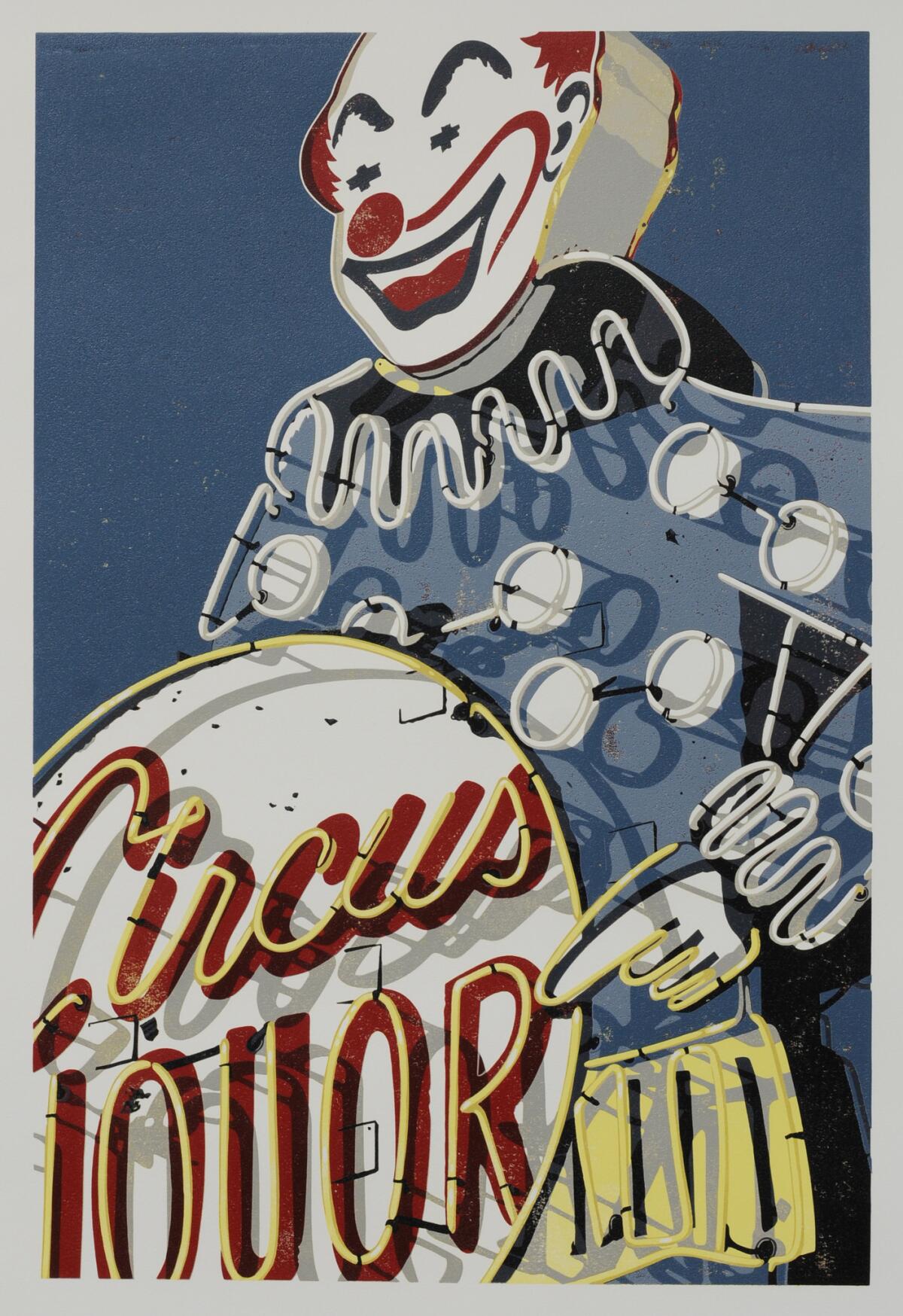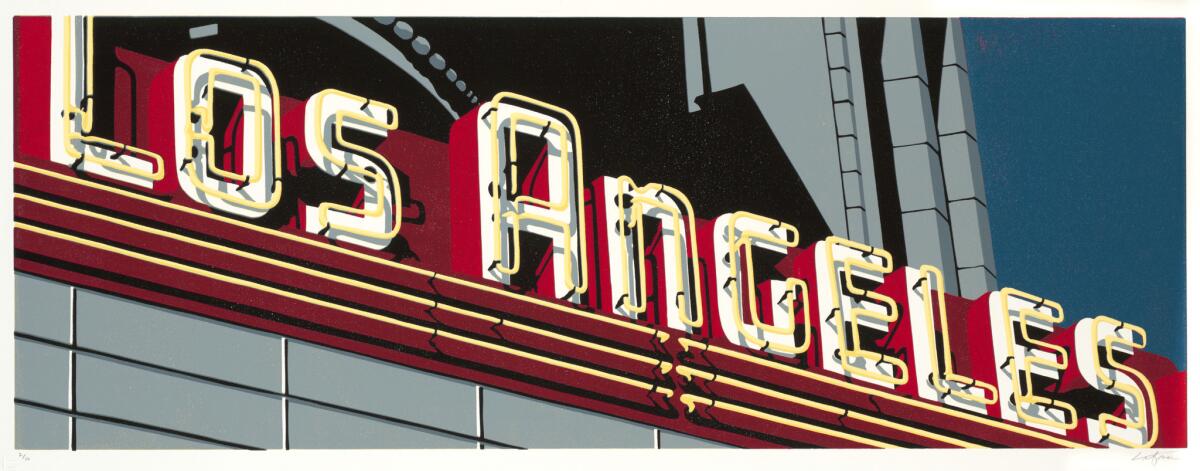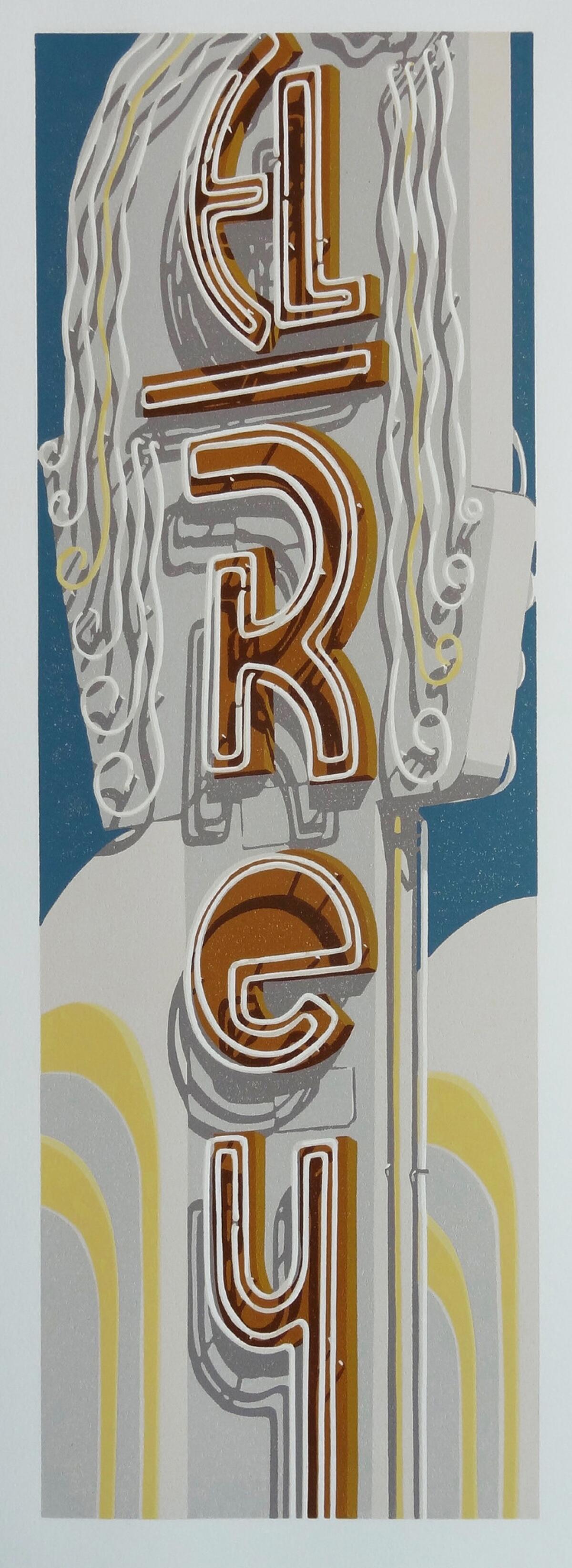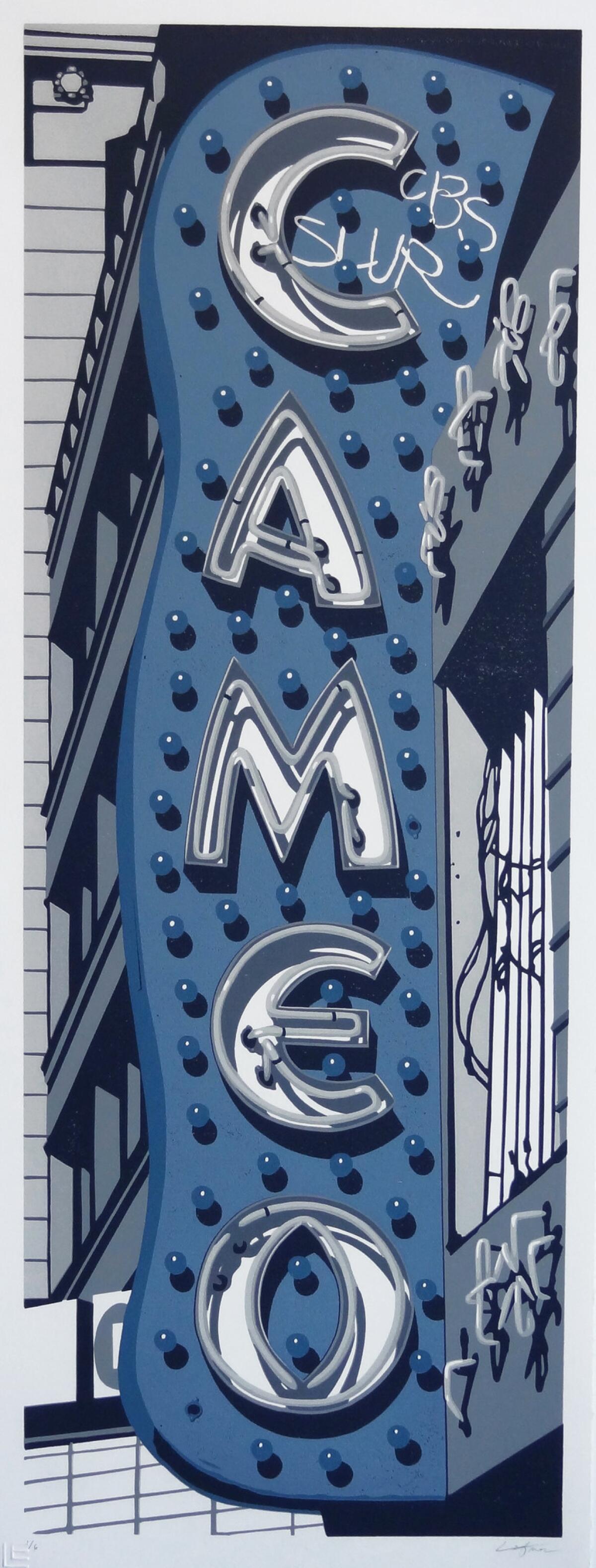If you love L.A.’s vintage signs, this show’s for you: One artist’s retro take on sun-bleached neon
- Share via
No, these are not doctored photographs. That’s the response artist Dave Lefner often proffers when asked about his reduction linocut prints. We may live in a Photoshopped world, but Lefner creates his buoyant depictions of retro Los Angeles through a laborious hand-printing process Picasso popularized in the 1950s.
The resulting prints — often of sun-bleached neon signs with shadows cast by the fading sun — are on display at the Pasadena Museum of California Art through Jan. 7.
Lefner creates the prints by carving successive layers from block-mounted linoleum etched with the artist’s drawings. Each layer is inked with a new color and then hand-cranked through a 30-by-50-foot Conrad press at his downtown Brewery studio. A nine-color print requires as many passes for each limited-edition linocut. His max so far: 17 colors.


SIGN UP for the free Essential Arts & Culture newsletter »
The potential for error in the monthlong operation is legion — which is why reduction linocuts are termed “suicide prints.” Rendered in the vinyl sheen of oil-based ink (Lefner has been asked if he spikes his medium with glitter), the rusted signs harbor a note of disquiet. Blight feels suspiciously bright.
Lefner began photographing Pop Art 25 years ago as genesis for his linocut drawings. He’s often keyed to historic theater marquees: the Orpheum, Palace, Los Angeles, Rialto. In Lefner’s hands, the Miracle Mile’s 1936 El Rey signage is an Art Deco confection: a tightly cropped tumble of neon tubing that curls around fat letters, backed by a chroma-rich sky. Los Angeles’ relentless sun blares, turned ominous by those dire shadows.
Lefner augments all that sun-shadow polarity by letting blank paper stand in for white paint. It helps further delineate the “perfect hard edge” he fell in love with long ago.
“That white element keeps the integrity of the paper,” said Lefner, 47. “It takes you off the page.”


Support coverage of the arts. Share this article.
MORE ART NEWS AND REVIEWS:
Kusama 'Infinity Mirrors' frenzy prompts the Broad to offer 40,000 more tickets
Self-Help Graphics sets up poster pop-up for DACA immigrants
The art of extinction: Why a dinosaur painted in Russia looks different from one painted in France
The biggest entertainment stories
Get our big stories about Hollywood, film, television, music, arts, culture and more right in your inbox as soon as they publish.
You may occasionally receive promotional content from the Los Angeles Times.







